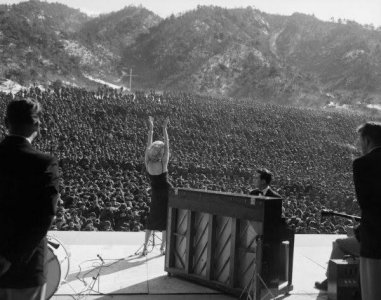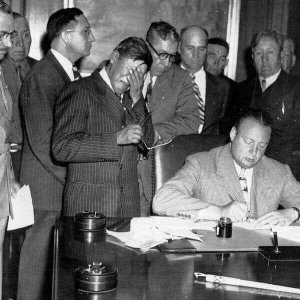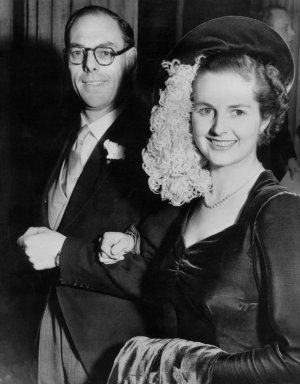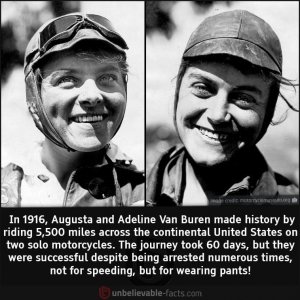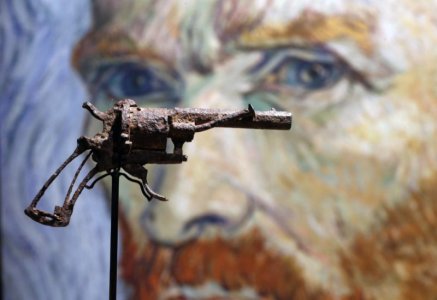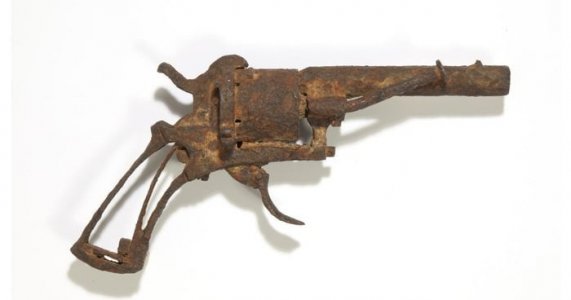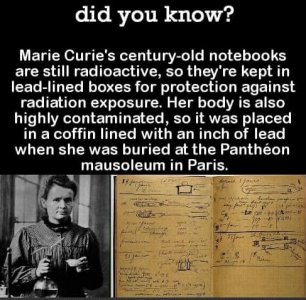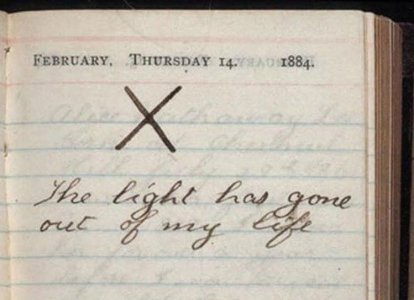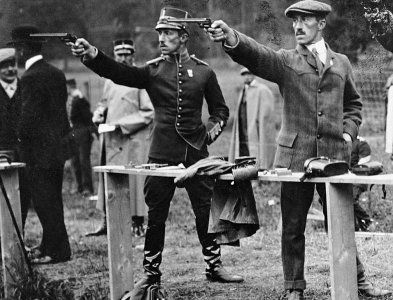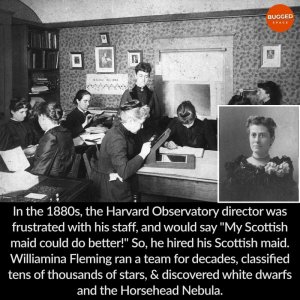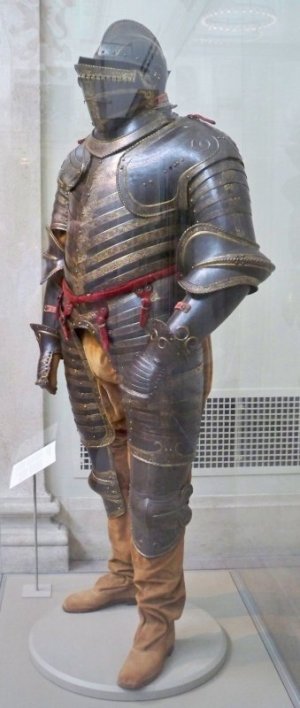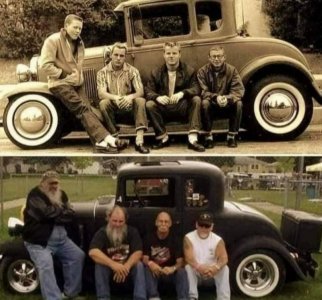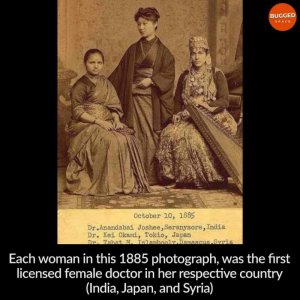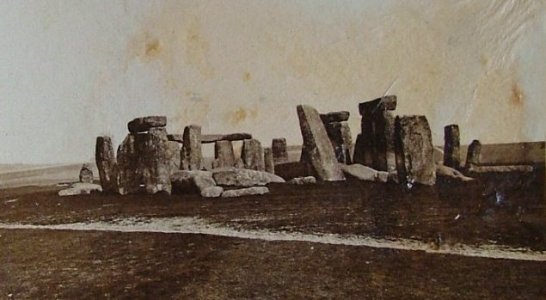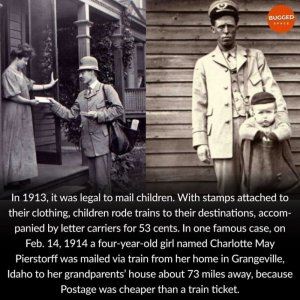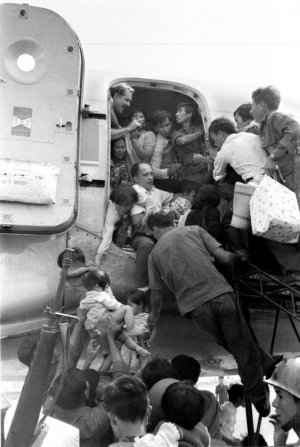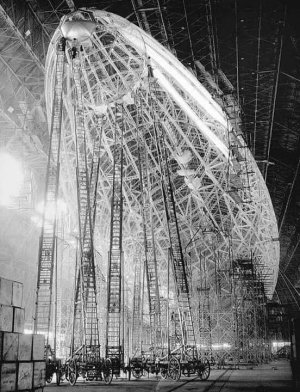You are using an out of date browser. It may not display this or other websites correctly.
You should upgrade or use an alternative browser.
You should upgrade or use an alternative browser.
History, anything goes, including pictures
- Thread starter mellowyellow
- Start date
mellowyellow
Well-known Member
mellowyellow
Well-known Member
Pappy
Living the Dream
mellowyellow
Well-known Member

Three boxes containing gold medals sit at the base of the pots of three young oak trees in this 1936 publicity photo of Jesse Owens, who is wearing the traditional laurel crown of an Olympic winner. The trees were given to each gold medalist by the German Olympic Committee. As of 2020, one of those oak trees was still alive behind a high school in Cleveland, Ohio
As of 2020 one of those oaks is still alive behind a high school in Cleveland Ohio! http://oos.sculpturecenter.org/items/show/1687
mellowyellow
Well-known Member
mellowyellow
Well-known Member
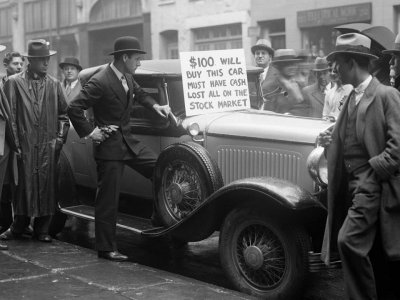
'Black Tuesday' aka Stock Market Crash of 1929
Black Tuesday hits Wall Street as investors trade 16,410,030 shares on the New York Stock Exchange in a single day. Billions of dollars were lost, wiping out thousands of investors, and stock tickers ran hours behind because the machinery could not handle the tremendous volume of trading. In the aftermath of Black Tuesday, America and the rest of the industrialized world spiraled downward into the Great Depression.
mellowyellow
Well-known Member
mellowyellow
Well-known Member
mellowyellow
Well-known Member
mellowyellow
Well-known Member
The 1054 year old St. Peter's church in Heysham. UK
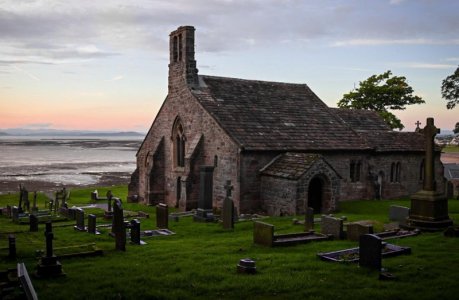
It is believed that a church was founded on this site in the 7th or 8th century. In 1080 it was recorded that the location was the site of an old Anglo-Saxon church. Some of the fabric of that church remains in the present church. The ancel was built around 1340–50 and the south aisle was added in the 15th century.
With a large majority of Australians horrrified by the thought of nuclear power, this lovely spot has two power stations and a holiday park right next door called the "Glowing Green Camping Machine.
The nuclear power station is operated by EDF Energy in Heysham, Lancashire, England. The site is divided into two separately-managed nuclear power stations, Heysham 1 and Heysham 2, both with two reactors of the advanced gas-cooled reactor type.
Heysham 1 was first constructed in 1970 and began producing nuclear power thirteen years later, it is due to operate for the next three years, until 2024. The Heysham 2 site, containing two more reactors, began producing power in 1988 and is due to operate until 2030.

It is believed that a church was founded on this site in the 7th or 8th century. In 1080 it was recorded that the location was the site of an old Anglo-Saxon church. Some of the fabric of that church remains in the present church. The ancel was built around 1340–50 and the south aisle was added in the 15th century.
With a large majority of Australians horrrified by the thought of nuclear power, this lovely spot has two power stations and a holiday park right next door called the "Glowing Green Camping Machine.
The nuclear power station is operated by EDF Energy in Heysham, Lancashire, England. The site is divided into two separately-managed nuclear power stations, Heysham 1 and Heysham 2, both with two reactors of the advanced gas-cooled reactor type.
Heysham 1 was first constructed in 1970 and began producing nuclear power thirteen years later, it is due to operate for the next three years, until 2024. The Heysham 2 site, containing two more reactors, began producing power in 1988 and is due to operate until 2030.
mellowyellow
Well-known Member
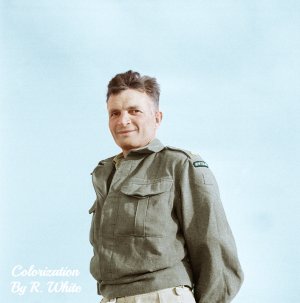
The only combatant soldier ever to receive two Victoria Crosses, New Zealander, Captain Charles Upham, North Africa, October 16, 1941.
Second Lieutenant Charles Hazlitt Upham (8077), New Zealand Military Forces.
During the operations in Crete this officer performed a series of remarkable exploits, showing outstanding leadership, tactical skill and utter indifference to danger. He commanded a forward platoon in the attack on Malemeon 22nd May and fought his way forward for over 3,000 yards unsupported by any other arms and against a defence strongly organised in depth. During this operation his platoon destroyed numerous enemy posts but on three occasions sections were temporarily held up. In the first case, under a heavy fire from a machine gun nest he advanced to close quarters with pistol and grenades, so demoralizing the occupants that his section was able to "mop up" with ease. Another of his sections was then held up by two machine guns in a house. He went in and placed a grenade through a window, destroying the crew of one machine gun and several others, the other machine gun being silenced by the fire of his sections. In the third case he crawled to within 15 yards of an M.G. post and killed the gunners with a grenade. When his Company withdrew from Maleme he helped to carry a wounded man out under fire, and together with another officer rallied more men together to carry other wounded men out. He was then sent to bring in a company which had become isolated. With a Corporal he went through enemy territory over 600 yards, killing two Germans on the way, found the company, and brought it back to the Battalion's new position. But for this action it would have been completely cut off. During the following two days his platoon occupied an exposed position on forward slopes and was continuously under fire. Second Lieutenant Upham was blown over by one mortar shell, and painfully wounded by a piece of shrapnelbehind the left shoulder, by another. He disregarded this wound and remained on duty. He also received a bullet in the foot which he later removed in Egypt. At Galatas on 25th May his platoon was heavily engaged and came under severe mortar and machine-gun fire. While his platoon stopped under cover of a ridge Second-Lieutenant Upham went forward, observed the enemy and brought the platoon forward when the Germans advanced. They killed over 40 with fire and grenades and forced the remainder to fall back. When his platoon was ordered to retire he sent it back under the platoon Sergeant and he went back to warn other troops that they were being cut off. When he came out himself he was fired on by two Germans. He fell and shammed dead, then crawled into a position and having the use of only one arm rested his rifle in the fork of a tree and as the Germans came forward he killed them both. The second to fall actually hit the muzzle of the rifle as he fell. On 30th May at Sphakia his platoon was ordered to deal with a party of the enemy which had advanced down a ravine to near Force Headquarters. Though in an exhausted condition he climbed the steep hill to the west of the ravine, placed his men in positions on the slope overlooking the ravine and himself went to the top with a Bren Gun and two riflemen. By clever tactics he induced the enemy party to expose itself and then at a range of 500 yards shot 22 and caused the remainder to disperse in panic. During the whole of the operations he suffered from dysentery and was able to eat very little, in addition to being wounded and bruised.
He showed superb coolness, great skill and dash and complete disregard of danger. His conduct and leadership inspired his whole platoon to fight magnificently throughout, and in fact was an inspiration to the Battalion.
mellowyellow
Well-known Member
https://external-preview.redd.it/J1...bp&s=38215d887f88f83e56674b75841391432fe40bd6
Health officer inspecting people for smallpox vaccination scars, Newark, New Jersey, 1931.
In the early 1900s, the smallpox epidemic had scarred the United States so badly that to move anywhere, one had to first prove they were 'safe'. The proof wasn't just required at ports and railway stations, but even to get on with regular life—to go to work, ride the train, attend college, watch a movie or even to grab drinks at a club. A certificate to show you were inoculated against smallpox wasn't enough. You were required to present a scar. The scar you wore on your arm was effectively the world's first vaccine passport.
Health officer inspecting people for smallpox vaccination scars, Newark, New Jersey, 1931.
In the early 1900s, the smallpox epidemic had scarred the United States so badly that to move anywhere, one had to first prove they were 'safe'. The proof wasn't just required at ports and railway stations, but even to get on with regular life—to go to work, ride the train, attend college, watch a movie or even to grab drinks at a club. A certificate to show you were inoculated against smallpox wasn't enough. You were required to present a scar. The scar you wore on your arm was effectively the world's first vaccine passport.
mellowyellow
Well-known Member
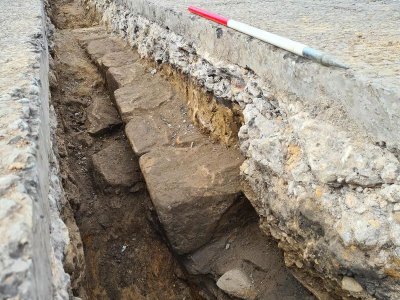
Section of Hadrian’s Wall Discovered Beneath Busy Newcastle Street
Workers replacing a pipe in the West Road area of Newcastle, England, recently made a surprising discovery: a previously unknown, ten-foot-long section of Hadrian’s Wall, one of the country’s most iconic ancient landmarks….. https://www.smithsonianmag.com/smar...ered-beneath-busy-newcastle-street-180978415/
mellowyellow
Well-known Member
Pappy
Living the Dream
mellowyellow
Well-known Member
Paco Dennis
SF VIP
- Location
- Mid-Missouri
How history repeats itself.... 



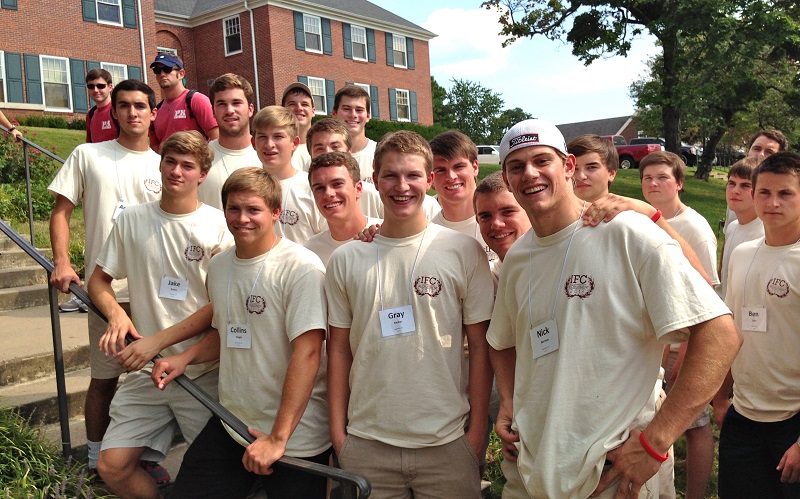
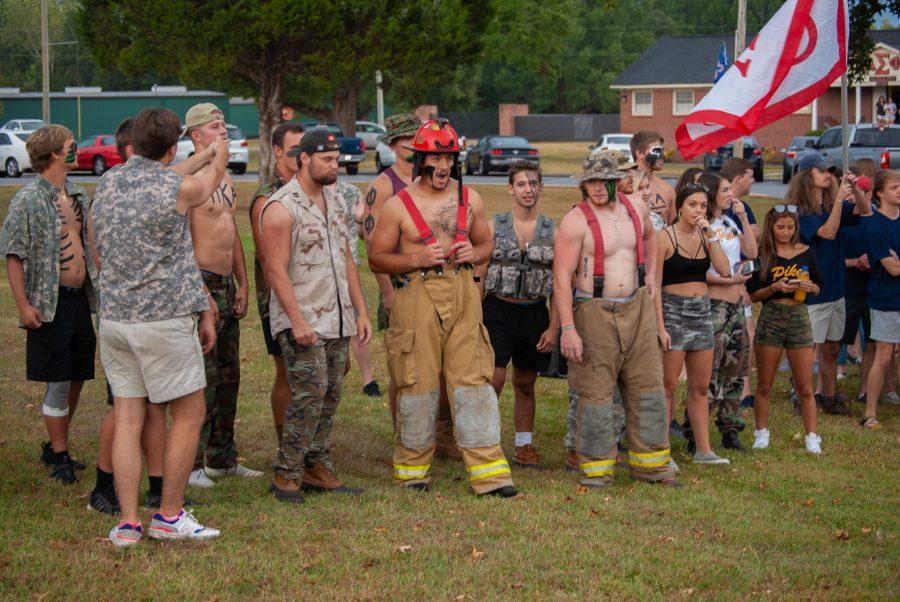




Last edited:


